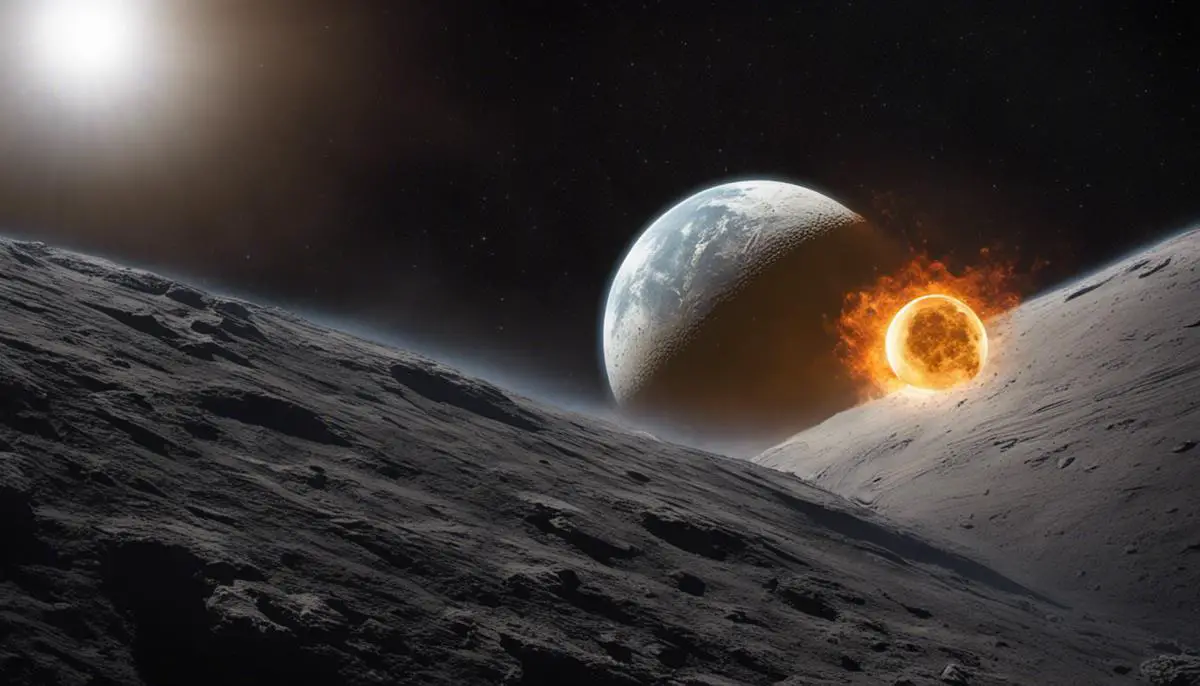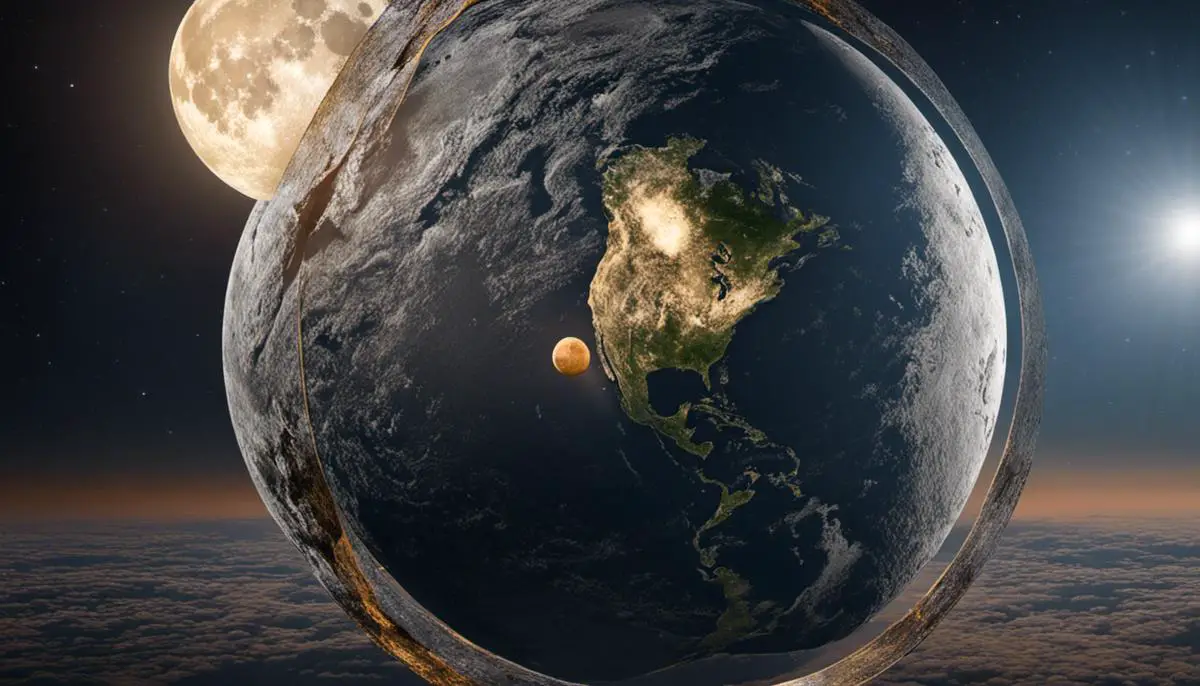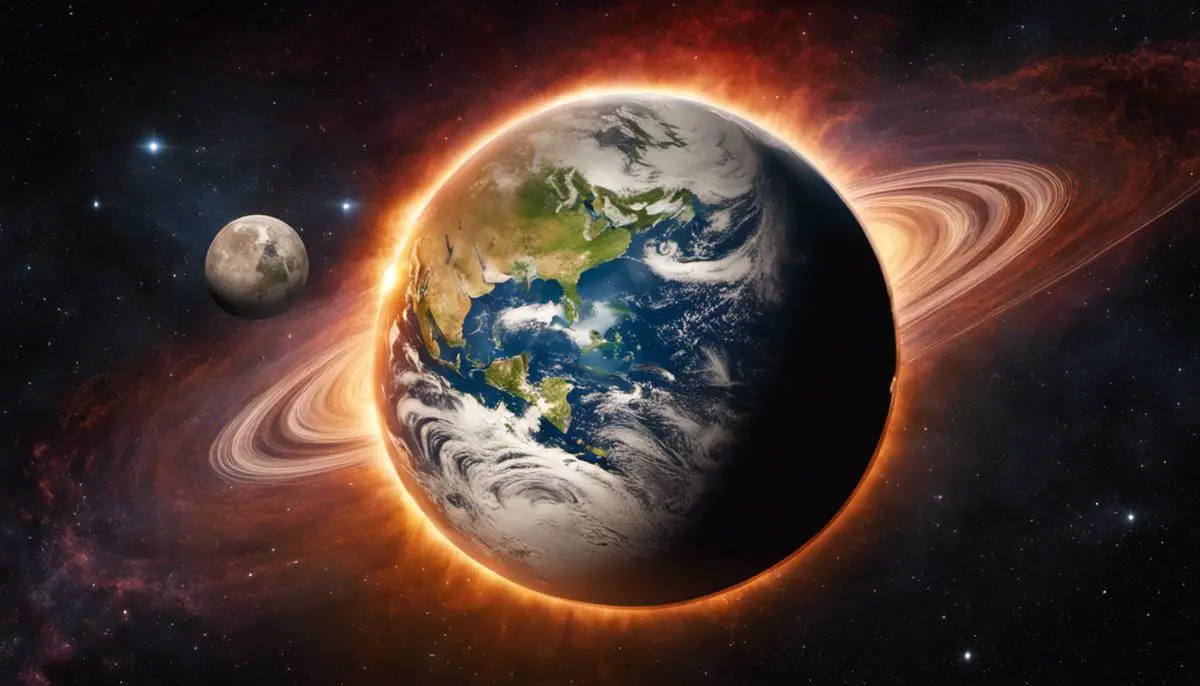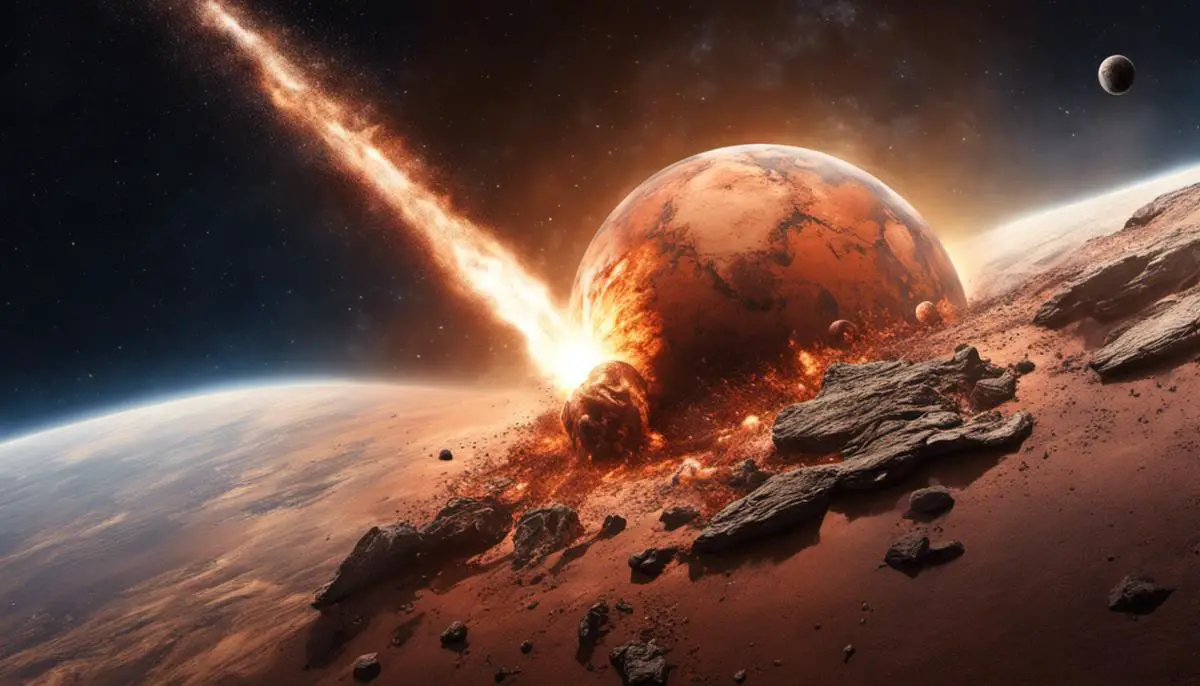The enigmatic origins of the Moon have provoked scientific curiosity for centuries. Exploring discourses around its formation are essential in unlocking the mysteries of our universe and shedding light on planetary formation processes. The quest to determining the Moon’s inception revolves around three primary theories: the Giant Impact Hypothesis, the Capture Theory, and the Co-Accretion Theory. Each of these theories carries different implications about the early dynamics of our solar system and provides unique insights into the events that transpired approximately 4.5 billion years ago. This exploration aims to critically evaluate the supportive evidence for each theory in a quest to unravel the most plausible explanation for the Moon’s formation.
Contents
Giant Impact Hypothesis
Evaluating Evidence Supporting the Giant Impact Hypothesis: A Scrutiny of Moon Formation
The mysterious origin of our moon has long fascinated scientists, scholars, and cosmic enthusiasts. Over the decades, various hypotheses have grappled for prominence in the astrophysical domain; one that currently holds sway is known as the Giant Impact Hypothesis. This hypothesis suggests the moon was formed from the debris released by a colossal collision between the primordial Earth and a hypothetical Mars-sized body named “Theia.”
One of the compelling pieces of evidence underscoring the Giant Impact Hypothesis lies in the composition of moon rocks. These lunar samples, brought back by the Apollo missions, show a striking similarity to Earth’s crustal rocks, most notably in the isotopic composition of oxygen. Both lunar and terrestrial rocks share almost identical ratios of oxygen isotopes, unlike meteorites from other parts of the solar system—bolstering the case for a shared ancestry through a catastrophic collision.
Moreover, the deficiency in volatile elements (such as water, nitrogen, and noble gases) in lunar samples, indicates a violent high-energy event, such as prescribed by the Giant Impact Hypothesis. The high temperate and energy involved in this colossal crash likely caused these volatile elements to be lost in space.
Morphological evidence extending support to the Giant Impact Hypothesis is the significantly larger iron core of Earth compared to the moon. If the moon was derived from the largely silicate mantle and crust of an impacted Earth, this could explain its smaller core and overall lower density relative to our planet.
The Earth’s spin and the moon’s orbit also proffer corroboration. In a life-altering collision scenario, a substantial fraction of Earth’s initial spin angular momentum would have transferred to the moon’s orbital momentum. Indeed, this idea aligns well with current observations of Earth’s rotation and the moon’s receding orbit.
Conclusively, one of the most elegant endorsements of the Giant Impact Hypothesis stems from the successful computer simulations. These numerical scenarios mimic the probable physical conditions of the giant impact, yielding a disc of searingly hot, ejected material around a young Earth, which over millennia, accreted to form the moon. The continual refinement and precision in these computer models add an undeniable layer of credence to this hypothesis.
Clearly, the Giant Impact Hypothesis, fortified by a constellation of diverse evidence, offers a plausible explanation for our moon’s existence, holding a revered position in the celestial courtroom. Yet the door remains ajar for fresh insights and interpretations to refine this perspective, as science is a continually evolving tapestry of knowledge and understanding. After all, the quest to discern the cryptic origins of our moon represents not only an investigation of our past but a beacon illuminating our path ahead in the cosmic journey.

Capture Theory
Titled: Delving Deeper into the Capture Theory: The Lunar Passages
Significant contributions into understanding our Moon’s origin are credited to the robust Capture Hypothesis. This proposition purports that our Moon was a wandering celestial body that was snared by the gravitational field of the Earth during the early stages of the solar system. The Moon was consequently “captured” and entered into stable orbit around the Earth. While not without its controversies, this theory commands attention due to various strands of compelling evidence supporting its claims.
The cornerstone of the Capture Theory is the dynamical analysis. Astronomical odds that a celestial body on its solar system-trek might get entangled into an orbit around a planet, indeed sound astronomical. However, the specifics of Earth and Moon’s orbital characteristics stimulate further scrutiny. It is the peculiar inclination of the Moon’s orbit around the Earth, at a slight tilt of 5 degrees off from Earth’s equatorial plane, which instigates contemplation. Considering most other large moons in our solar system have orbits close to their host planet’s equatorial plane, the Moon’s inclination stand as an anomaly. This specific dynamical characteristic aligns with projections of a captured celestial body, strengthening the theory’s scientific standing.
Further bolstering evidence for the Capture Theory stems from studies of the Moon’s natural satellites. Other moons within our solar system frequently exhibit captured asteroids or minor planets in influenced orbits, compelling model supporting the presence of such similar lunar capture.
A standout aspect of the Capture Theory is the independence it enjoys from the need to explain the atomic similarities within lunar and terrestrial rocks. While the more eminent Giant Impact Hypothesis is obligated to interpret the near-identical isotopic compositions of the lunar and Earth rocks within its framework, the Capture Hypothesis is relieved. It simply posits the Moon did not originate from Earth but was a passing body ensnared into orbit.
Much of the fascination into the Capture Theory stems from an energetic resonance with a sense of cosmic serendipity – a simple brush with an interstellar wanderer that evolved into a steadfast partnership over eons. It provides a captivating interpretation of lunar formation that, unlike other competing hypotheses, isn’t strictly contingent upon a violent interplanetary clash.
The verdict on the genesis theory of our Moon remains elusive. However, the body of compelling evidence asserting the viability of the Capture Theory is meritorious of further exploration and study. Our ceaseless quest for lunar understanding symbolizes the enduring human endeavor to decrypt the ancient celestial codices etched upon the night sky. Undeniably, the mysteries concealed within our closest celestial companion continue to beckon scientific intrigue, fanning the flames of our cosmic curiosity.

Co-Accretion Theory
Examining the Evidence: A Closer Look at Co-Accretion Theory of Moon’s Formation
Delving deeper into the realm of lunar genesis, it is prudent to analyze the Co-Accretion Theory with as much scrutiny as the competing theories. A theory that posits planet Earth and our moon came into existence concurrently from the original solar nebula. Can this theory stand against the cumulative weight of robust evidence and circumstantial data pointing towards its veracity?
Remarkably, the Co-Accretion Theory, otherwise known as the Fission hypothesis or the George Darwin hypothesis, has historically faced serious scientific objections. A considerable amount of this skepticism arises from an understanding of the angular momentum constraints embodied in this theory. The concept of the moon and earth accreting together is fascinating, indeed. However, it requires a system of exceptionally high angular momentum – a sort of planetary pirouette – that is far beyond what we currently observe in the Earth-Moon system.
A further complication arises when one examines the iron abundance variations between the Earth and the moon. The notable iron-poor composition of the moon, as compared to our iron-rich planet, raises significant questions. This discrepancy undermines the Co-Accretion Theory, inferring as it does that the moon and earth resulted from an essentially uniform nebular cloud.
Moreover, according to the Co-Accretion Theory, both the Earth and the moon should possess similar dense core compositions. The reality, however, is starkly contrasting. The scientific community widely acknowledges that the moon’s core is substantially smaller, forming merely 1-2% of its total mass, unlike the Earth’s core, which constitutes approximately 33% of its total mass.
Reviewing these scientific reservations against the Co-Accretion Theory illustrates how this model falls short in reconciling with the empirical truth of lunar samples, earth’s spin, and moon’s orbit that stand in harmony with the Giant Impact Hypothesis. Also, unlike the Capture Theory, the Co-Accretion Theory cannot explain the peculiar inclination of Moon’s orbit. Therefore, despite the theory’s intuitive allure attributing to simultaneous formation of the earth and the moon, it struggles to hold ground in the scientific arena.
So, where does this leave the Co-Accretion Theory? Perhaps it might serve as a stepping-stone for future hypothetical frameworks or an interesting wrong turn in the quest to comprehend our moon’s origins. The essence of science revolves around ever-evolving ideas, constant refining of understanding, and relentless pursuit of knowledge. And in the endeavor to grasp the lunar genesis, whether it be through co-accretion or colossal impacts, the scientific journey continues – unraveling the mysteries of our bewitchingly beautiful and eternally captivating celestial neighbor.

The contemplation of moon formation theories remains a subtle indicator of the impressive advancements made in understanding our cosmic neighborhood. The ongoing inquiry into these theories—Giant Impact, Capture, and Co-Accretion— reinforces the notion that our knowledge about the universe is constantly evolving. Each explanation provides unique understanding while presenting its own set of challenges. As technology and cosmic exploration continue to advance, so will our comprehension of the Moon’s origins. Therefore, these theories serve not as definitive answers, but as gateways inspiring further questions, discoveries, and innovations in the realm of celestial illumination and understanding.
